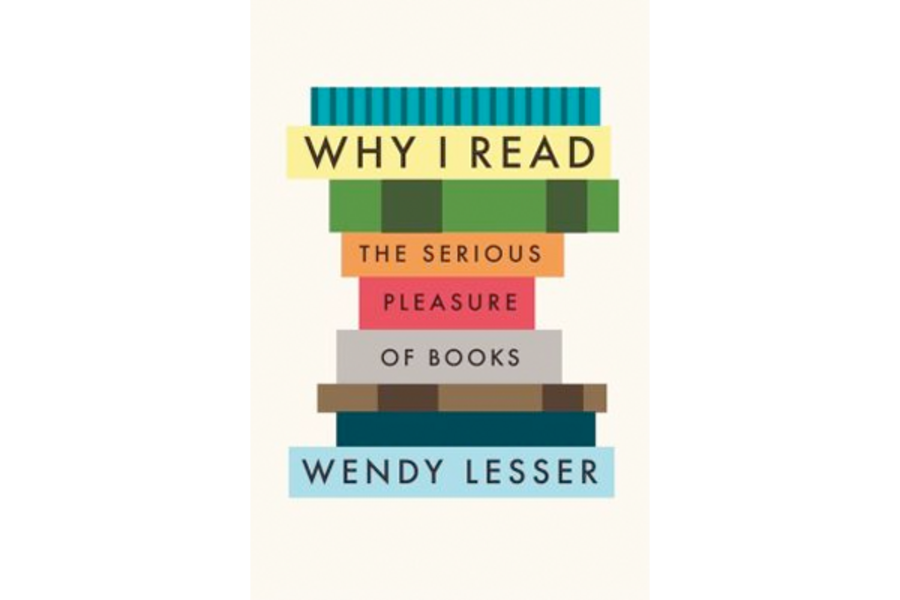Why I Read
Reading Wendy Lesser is like attending a book club where the leader is an Olympic champion reader. Think the Dana Torres of page-turning. She seems to have read, and then re-read, everything. She views the world through the words of Milton, Austen, Dostoevsky, and Shakespeare. Lesser recently re-read Henry James’s intricate classic "Wings of the Dove" on her iPhone while commuting. She has opinions about not only the complete works of Proust – which she’s read and re-read – but also the different translations.
And in her Why I Read: The Serious Pleasure of Books, Lesser tackles a deceptively simple question: Why does one read?
The question might be impossible to answer, but it’s a pleasure to explore. To navigate her way, Lesser makes the question personal and conversational. Conversation, in fact, is explicitly what she’s aiming for. By deconstructing the elements of good fiction – and also genre fiction, nonfiction, poetry, theater, and even television – Lesser leads readers through something like a book club discussion on steroids. And, just like your favorite book club, the discussion is brainy, it’s personal, and it’s occasionally off topic.
So: Why does Lesser read? First, Lesser acknowledges that when it comes to deconstructing the elements of great books there will be no simple laundry lists. She does, however, roll up her sleeves and throw down some specifics. To begin with, there’s plot and character. In a chapter that explores Milton, James, and Hilary Mantel, Lesser explains that who fictional characters are is indistinguishable from what they do. In other words, plot shapes character. Also on the list is authority – here we discuss Shakespeare and the authenticity of a writer’s voice; novelty, or the role of innovation in literary art; grandeur, and intimacy.
A chapter titled “The Space Between” provides philosophical insights on the boundaries crossed through reading, including boundaries between the reader and the author, through time and space.
This is putting a finger on one of the most powerful aspects of art. “Reading literature” Lesser writes, “is a way of reaching back to something bigger and older and different.”
What Lesser isn’t attempting here is revising the canon. She’s not taking on F.R. Leavis and his Great Tradition. Rather, she confines this conversation to an explication of her personal favorites.
Because her tastes are wide ranging, for the most part this works. But it also invites disappointment. If this is a book club, you might want a say in choosing the book. And when Lesser’s tastes run to the classics, the book makes sense. When her tastes run to genre fiction, it feels random. The discussion is best when Lesser touches on her biggest inspirations – Dostoevsky, Swift, Shakespeare, Milton, James, and Proust. Emboldened by Lesser’s iPhone reading, I downloaded a favorite James novel, the free iPad version, as well as dusting off a rather under-used James biography from my actual bookshelf.
But Lesser also has a preference for mystery writing, so unless you’re a big fan of Scandinavian mysteries (and there’s every reason to be), you may find yourself wishing she’d discuss writing that has a stronger cultural impact. It’d be great to hear Lesser’s take on ultra-successful contemporary writers like Zadie Smith, Jonathan Franzen, or Dave Eggers. And if we’re being random, wouldn't it be fun to see her erudition applied to the "50 Shades" phenomenon or Bridget Jones? What does Helen Fielding take from Jane Austen (or for that matter E.L. James from Henry!)? I find myself wanting to put the kettle on and sit down with Lesser to learn more.
This is because, ultimately, Lesser is a reader’s reader. As the founder and editor of the literary magazine The Threepenny Review, Lesser has spent years as a gatekeeper and publisher for new writing. But, surprisingly, she doesn’t come across as a writer’s reader. Lesser seems hot for page-turners and surprisingly tepid for innovation. James Joyce, for instance, is “nearly unreadable” and “self-promotional.” The stylization of "Ulysses" that may have created a turning point for the modern novel, she says, “has always gotten on my nerves.”
One attribute Lesser ventures to attach to all great literature is the obscure quality of “the truth," and she repeatedly returns to this theme. This is baffling. Sure, we look to the best in art to illuminate unexplored elements of the human experience, to get at what’s real. But the truth as a destination seems rather abstract. It even comes across as a bit fuddy-duddy and overly moralistic to attempt it. Thinking of so many American writers – from Thoreau and Whitman to Lesser’s favorite James, that master of the psychological charade – it seems problematic to assign them righteous motives.
Lesser, in her prologue, is the first to say that the idea of truth is elusive and that she’s focused here on conversation, not clarity.
“The point,” Lesser writes, “is to make a stab at it.”
“In the never-ending conversation about what might count as good literature,” continues Lesser, “there are many worse things than being wrong.”
And that, for Lesser, is the last word.
Janet Saidi is a public-radio producer and professor at KBIA Radio and the Missouri School of Journalism in Columbia, Mo.






